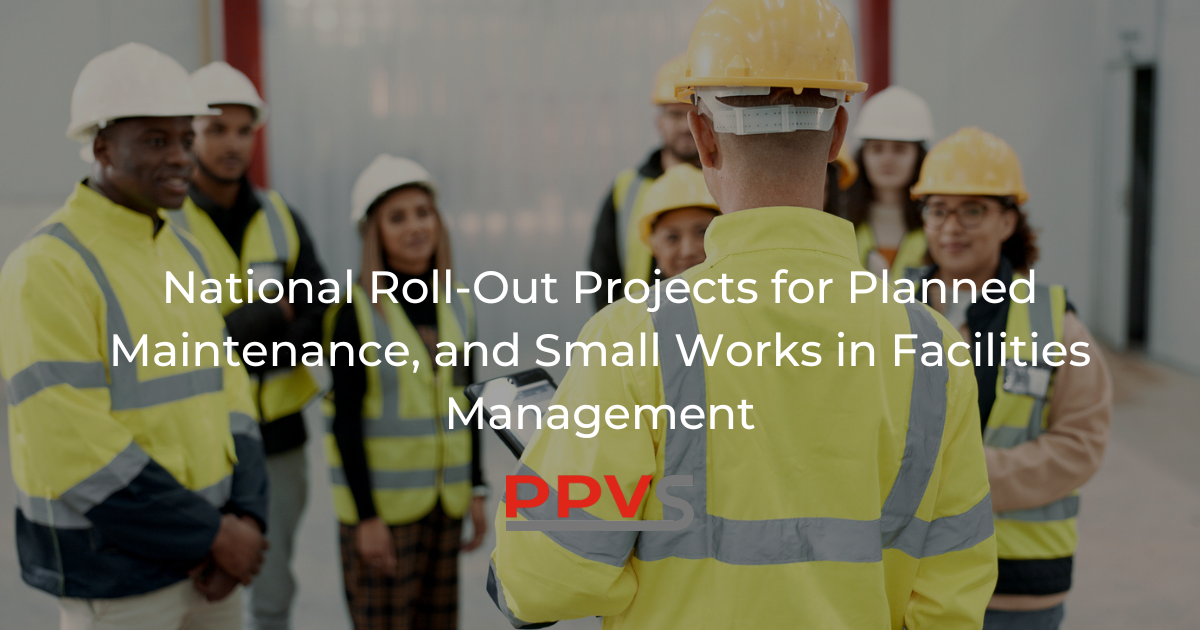PPVS Complete Facilities Management

What is Reactive Maintenance?
Reactive maintenance is the opposite of preventative maintenance and mainly involves responding to issues as and when they emerge, including random breakdowns or equipment failures. Even with sufficient preventative maintenance, accidents and faults might still happen and require a rapid response.
Depending on the company and its financial situation, it may be more cost-effective to employ reactive maintenance rather than checking the equipment at regular intervals – though it’s usually most efficient to use both types of maintenance. In this blog post, we look more closely at what reactive maintenance is, including its advantages, disadvantages and how it could help your company’s overall maintenance strategy.
Types of Reactive Maintenance
When answering, ‘what is reactive maintenance?’ There are four main types to consider, including:
Breakdown Maintenance
When machines won’t operate, or even start, this is often a serious issue that needs an immediate remedy so work can resume promptly. The downtime before someone fixes this problem can significantly affect the company’s profits.
Run-to-failure Maintenance
Some companies plan equipment breakdowns by leaving a machine to run without maintenance until it breaks and requires a repair; the planned nature of this avoids production issues. An example of this is a light bulb – a company typically waits until it burns out before replacing it.
Corrective Maintenance
This refers to any maintenance that fixes a malfunction and allows a piece of equipment to work as intended – this is before it causes a serious issue. In a sense, this is partly preventative but is still responding to an issue in the equipment after its discovery.
Emergency Maintenance
If there’s a serious health and safety issue impacting the equipment, reactive maintenance is essential. This may be due to the safety mechanism breaking on a machine or any other dangerous fault. The only way to stop this possibility is to also enact preventative maintenance.
Advantages of Reactive Maintenance
There are various benefits to reactive maintenance which could make it an essential part of your organisation’s maintenance strategy. This approach ensures less upfront fees because you aren’t only relying on preventative maintenance – letting you enjoy a strong blend of both. Incorporating both types means the business is far less dependent on planned downtime and can still react to issues as they appear; a stronger reactive strategy helps companies avoid any unfortunate equipment surprises. On top of this, the team could enjoy the peace of mind that comes with being able to easily address machine failures.
Disadvantages of Reactive Maintenance
Implementing this approach incorrectly can lead to serious problems. For example, if you don’t pair it well with preventative maintenance, there’s a greater risk of stoppages and lost profit during equipment breakdowns. In addition, an overemphasis on reactive maintenance may limit the overall lifespan of these machines; the faults often cause long-term damage without preventative measures.
Unmaintained equipment may also consume a greater amount of energy; regular check-ups might reveal avoidable inefficiencies. Without some preventative maintenance, there’s also a significant chance of safety hazards – which could result in serious injuries to the employees operating these machines.
Reactive Maintenance’s Role in an Overall Maintenance Program
This form of maintenance should only be one component of a greater strategy, one that checks equipment and makes sure they’re safe to operate – but could still swiftly respond to breakdowns. These opposing approaches complement one another and make sure the company is able to weather short-term and long-term equipment issues.
The general rule in the industry is that reactive maintenance should only comprise 20% of an organisation’s maintenance strategy. However, faults can happen at any time even if the company makes use of preventative maintenance; 40% is a far more realistic figure.
Partnering With an Experienced Reactive Maintenance Service Provider
In order to account for the many possibilities that could emerge at your company, it’s important that you partner with an experienced facilities management business. This allows you to devise a strong strategy while ensuring that your business is able to counter equipment errors of all kinds.
PPVS has experience in many industries and can connect organisations across the UK with qualified electricians, plumbers, locksmiths and joiners on short notice. PPVS Operations team has a help desk facility for all reactive maintenance. Whether this be for an emergency job or building fabric issue for example, our Operations help desk covers all property services 24/7. We also offer a client portal for facilities or property operators to log works, view previous job information, view PPM’ planners and any works related to the property.
To learn more about our services or to learn more about what reactive maintenance means, you’re welcome to get in touch today.

Get in touch to see how we can help with your Facilities Management.
For general enquiries please fill out the form and our team will be back in touch. Or give us a call or email using the details below.







